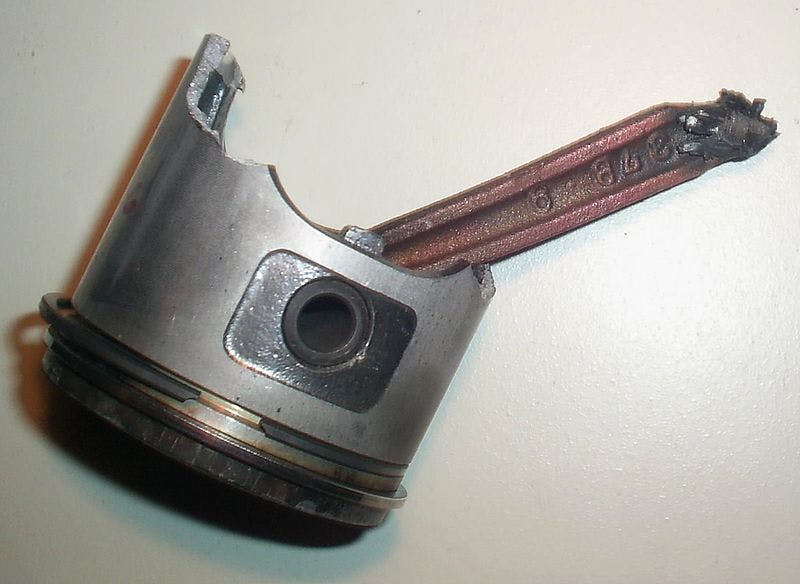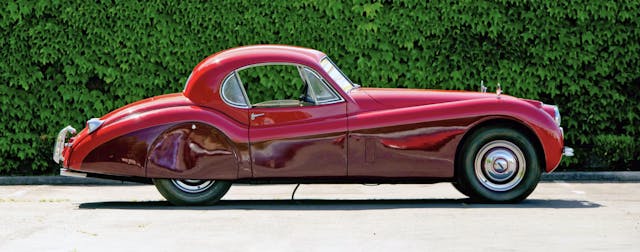Our Two Cents: The Weirdest Automotive Words
Words can be unnecessarily difficult in the English language, which does everything from borrowing words from other languages to organizing them in ways that makes no sense to non-native speakers. So for this installment of Our Two Cents, we asked the team here at Hagerty Media about automotive words we’ve encountered that are decidedly odd.
To be fair, we have only scratched the surface. There are oh-so-many words that fit the bill, and some of them are even crazier than the ones we came up with here. So have a look at what we think are weirdest words in the automotive lexicon, and sound off in the comments for ones you wish we brought up.
Kammback

“I’m gonna pick Kammback. That’s mostly because I love the design, but partially because I already wrote the definition for Vellum Venom:
“Kammback: a body design featuring a downward sloping roofline and rear deck that abruptly ends with a vertical panel (or near vertical). Proven to reduce aerodynamic drag by its namesake, Wunibald Kamm.” — Sajeev Mehta
Wrist Pin

“The wrist pin is definitely worthy of this list!” — Larry Webster
“Just for giggles, I googled to see if wrist pins are a thing for orthopedic surgery in a patient’s wrist. Who here thinks I got a relevant website from my search?” — Sajeev Mehta
Jubilee Clip

“Isn’t there something called a jubilee clip?” — Larry Webster
“I think the British call hose clamps ‘jubilee clips.’ That’s definitely a cooler name than hose clamp.” — Sajeev Mehta
Layrub Coupling

“And of course there are Laycock Layrub couplings: Only the Brits.” — Aaron Robinson
The, Absence of

“My vote is for the article the and the fact that the auto industry, particularly in Detroit, traditionally does not use an article as a modifier for car model names. For example, a Detroit marketing executive will say,
‘When we launched Malibu, we knew we would beat Camry.’
They do this instead of, ‘When we launched the Malibu, we knew we would beat the Camry.’ I’ve never understood it, I’ve always hated it. It’s like they want the car model to be considered an entity or something. So weird. You used to see it in print advertising copy. But there’s hardly any print advertising copy anymore, but that’s another story.” — Joe DeMatio
Spats

“Not only is ‘spat’ fun to say, because you spit the word out of your mouth, but it reveals an intersection between clothing and cars. Spats were originally a low-rise version of a gaiter (today, usually worn around your neck and/or mouth) for your ankle: a bit of cloth that you’d button over your shoe to keep dirt from getting inside it.
“In the automotive world, spats are removable panels that cover a car’s wheels … which do the same job that our feet (and shoes) do, although spats on a car don’t actually keep dirt from getting inside the tire; they’re mostly for aesthetic or aerodynamic value. Fun fact: Spat also refers to a cover over the upper part of a wheel on a plane.” — Grace Houghton
Splitter

“NACA duct, spoiler, valence—aero devices often have wonky names. The splitter is no different.
“To many a wing is a wing, no matter where you put it, but to the motorsports crowd wings have different monikers based on where they’re attached. Splitter, for example, is basically a wing on the nose that is flat to the pavement. The splitter diverts air to the nose of the car to create downforce. Downforce is good.
“Splitter, final answer. Oh, wait. Dzus fasteners! A ‘d’ followed by ‘z’, how cool is that?” — Cameron Neveu
Giubo

“I think the weirdest car word I’ve ever encountered is giubo, pronounced jew-boh. It’s a flexible coupling that allows rotational torque to be transmitted between a spinning shaft and the piece to which it is mated. Generally constructed of rubber, it corrects for misalignment in the system and dampens vibration. Commonly misspelled as ‘guibo,’ the term is a blend word derived from the Italian giunto, for ‘joint,’ and the engineer who patented it, Antonio Boschi, for use in the Alfa Romeo 1900. It is sometimes called a flex disc and is closely related to the rag joint.” — Stefan Lombard
“It is also known as a Rotoflex coupling, which is not as fun as my Laycock Layrub coupling suggestion.” — Aaron Robinson
***
Check out the Hagerty Media homepage so you don’t miss a single story, or better yet, bookmark it. To get our best stories delivered right to your inbox, subscribe to our newsletters.



How about a pet cock??
Gramps old Chevy had three on the tree, have had to tell more than one person what that was over the years.
Not a car part….but we always liked pulling “rockfords” on the farm with the truck too.
How about “marque” as in “the Jaguar marque”? Bothers me that it is often mispronounced ‘markee’ instead of the correct ‘mark’. The ‘markee’ pronunciation is spelled “marquee” and refers to signage you might find outside a theater.
Or a large tent.
Splitters are just a fad for millennials.
Splitter? Really? It is the most straight forward name for anything on a car since it describes exactly what it does: split the air.
“Gulp Valve” was a part of the exhaust recirc. system on my ’69 MGC.
I am fascinated by the insistence of some posters that certain words featured in this article are pronounced the way *they* say them, not some other way… My guess is that they also say “coop” for “coupé” and “Porsh” for “Porsche”. Back in the (relatively brief) period when most Americans could not expect to hear much German or French in their daily lives — roughly 1917 to the age of the internet and mass travel —, coop and Porsh made some kind of sense — they were words people read and spoke to each other without hearing the original. Not so much now. Of course, language evolves and anyone is free to say coop, Porsh, gweebo, ambliyance, busghetti, vicy-versy, vittles, or whatever in the comfort of their own garage. But out here in the big wide world, insisting on childish pronunciations like gweebo, and calling anyone who dares to contradict them moronic, is a little bit much.
What about Plinth, Petcock, and the British “Saloon” (Coupe)
Thanks for “petcock” which I’ve known and used for decades without ever wondering about origin of the term. I was so glad to have petcocks on all the heater hose connections to the engine block on my ’41 Plymouth because when a hose blew in the Nevada desert I was able to simply shut off the heater circuit, limp to a nearby stream, re-hydrate the old girl, and continue on. Looked it up – “Cock” is a term since 15th century for a valve or faucet, and “pet” is most likely from “small” in French – “petite”, or in English, “petty.”
Shooting Brake? Our friends from the U.K. own this one. I’ve never heard an explanation for how this term came about.
Slip Yoke and Slosh Module….two of my favorites!
Seriously Hagerty? You couldn’t find a better stock photo for a hose clamp than someone with a nauseatingly long gross thumb nail?
To be fair, your handle suggests that nausea is a not merely occasional feature of your daily life.
Although there are a ton (tonne?) of great comments here (and opportunities for excellent comebacks), I’m picking this one as my favorite!
If you are not using your fingernails as tools (tweezers, cutting open package 📦 tape, scrapers, or such) and letting nature grow replacements, maybe you are not truly a mechanic.
Giubos (donuts) can not only develop cracks from old age or constant battering, but they can lose chunks of the rubber surround. Racing Alfas have had this problem where the rubber chunks rip thru the floor boards and into the cockpit – serious injuries have occurred when this happens. Paul Spruell offers a cage to prevent the disintegrating giubo to be contained outside the car: https://www.paulspruell.com/motorsport/racing/gearboxes.html
My father always called the worm gear clamps, ‘aircraft clamps’. I guess he came across them when he flew fighters during WWII. I like using them but I wish that they wouldn’t squish out any rubber hoses in the notches – so unsightly!!
And they are older than you realize: https://en.wikipedia.org/wiki/Hose_clamp
Z Bar
Clutch linkage mounted between the frame and engine to transfer movement from the clutch pedal to the “clutch fork” (there’s another one).
Your US wrist pin is known as a gudgeon pin here in the UK.